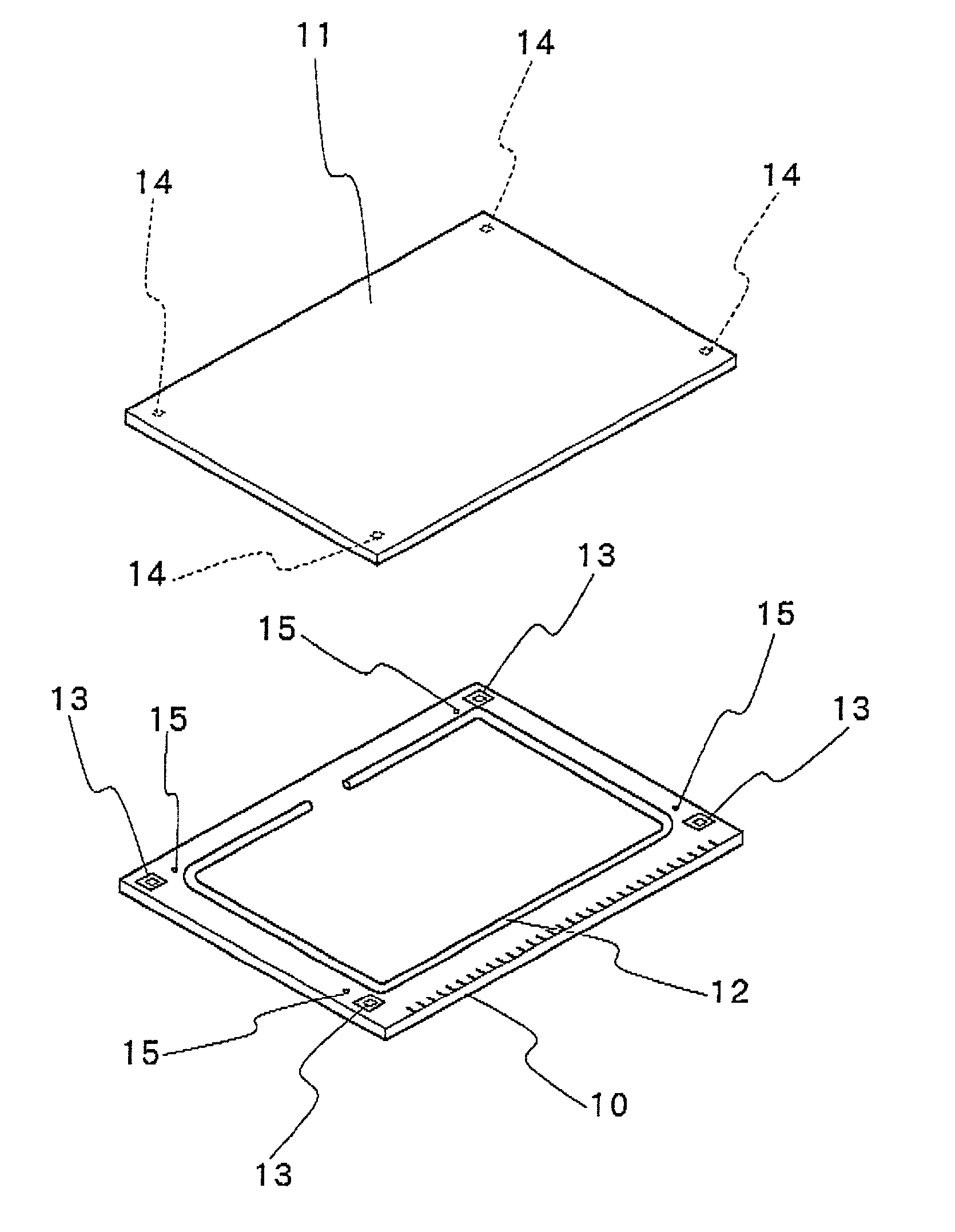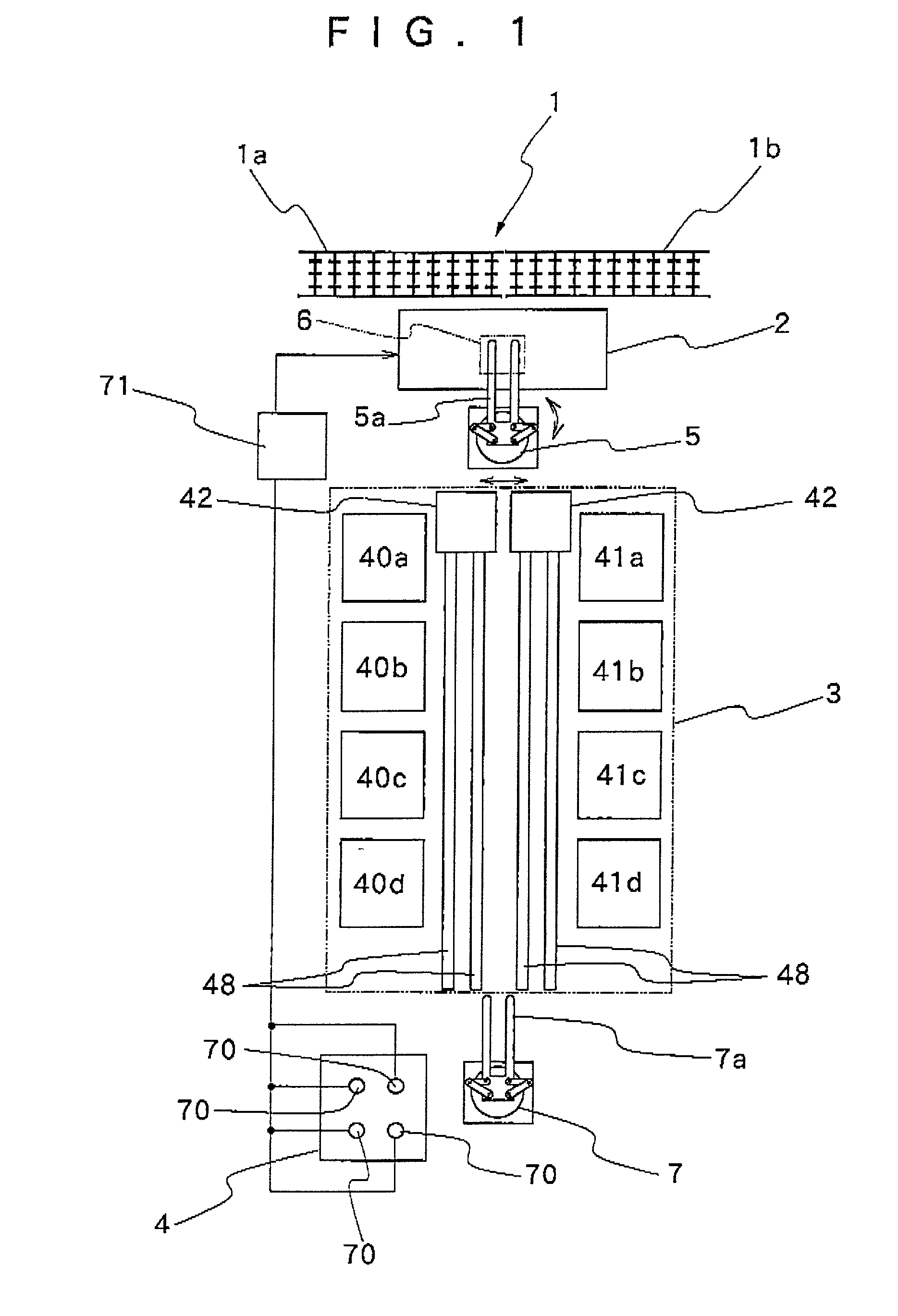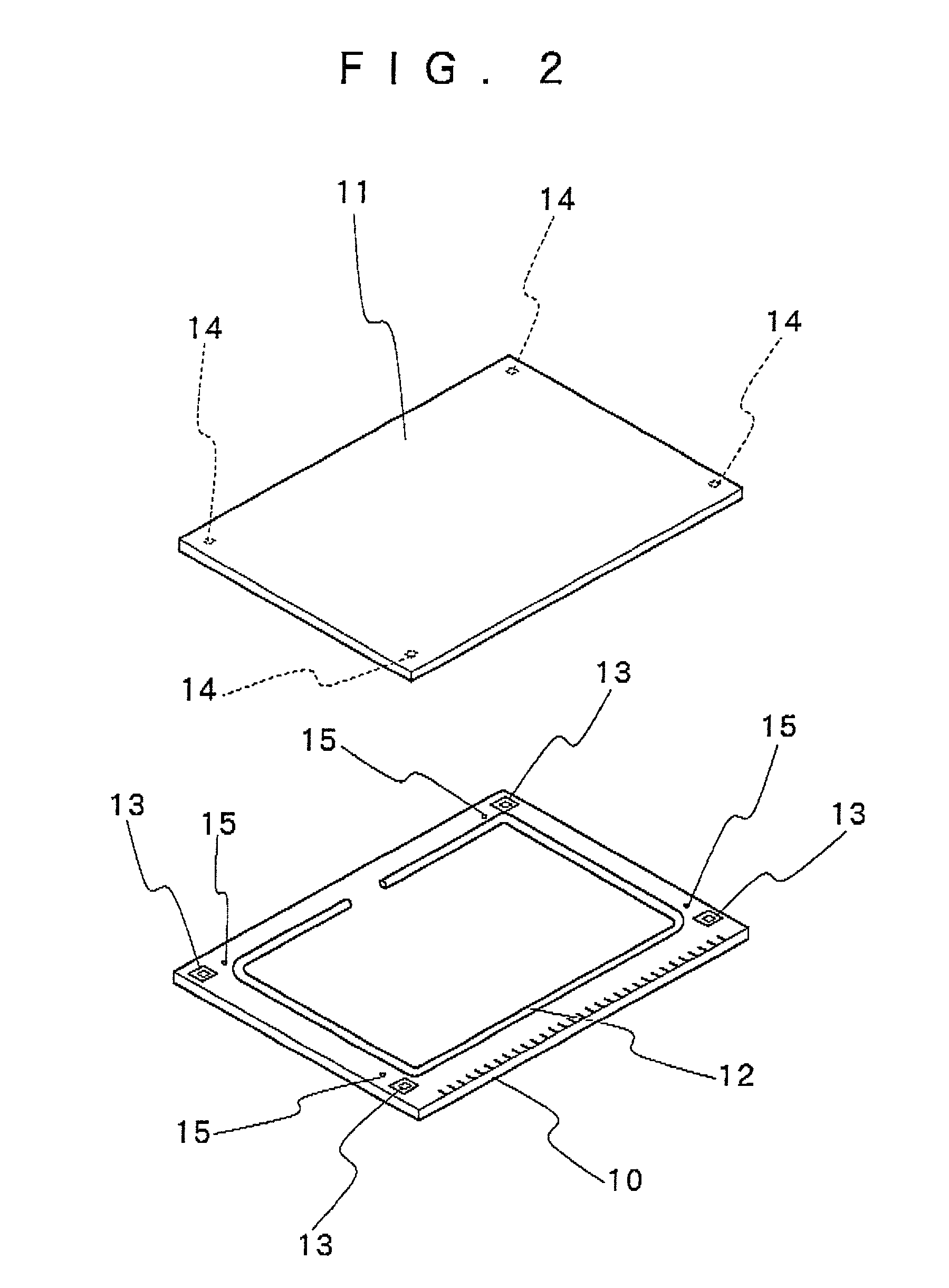Method and apparatus for bonding substrate plates together through gap-forming sealer material
- Summary
- Abstract
- Description
- Claims
- Application Information
AI Technical Summary
Benefits of technology
Problems solved by technology
Method used
Image
Examples
Embodiment Construction
[0028] Hereafter, the present invention is described more particularly by way of its preferred embodiment with reference to the accompanying drawings. Reference is firstly had to FIG. 1 which shows general layout of a substrate bonding press according to the present invention. In this figure, indicated at 1 is a substrate conveyer, at 2 a provisional press station, at 3 a hot press station and at 4 an inspection station.
[0029] In FIG. 2, denoted at 10 and 11 are lower and upper substrates, for example, a TFT substrate and a filter substrate of an LCD panel, respectively. A sealer material 12 is applied on the lower substrate 10 before pressing. For example, the sealer material 12 is applied along marginal edges of the lower substrate plate 10 in a rectangular framelike pattern with an open void portion at a predetermined position. After pressing and the two substrate plates 10 and 11 to adjust a gap space to a predetermined width, liquid crystal is sealed in the gap space through th...
PUM
| Property | Measurement | Unit |
|---|---|---|
| Shape | aaaaa | aaaaa |
Abstract
Description
Claims
Application Information
 Login to View More
Login to View More - R&D
- Intellectual Property
- Life Sciences
- Materials
- Tech Scout
- Unparalleled Data Quality
- Higher Quality Content
- 60% Fewer Hallucinations
Browse by: Latest US Patents, China's latest patents, Technical Efficacy Thesaurus, Application Domain, Technology Topic, Popular Technical Reports.
© 2025 PatSnap. All rights reserved.Legal|Privacy policy|Modern Slavery Act Transparency Statement|Sitemap|About US| Contact US: help@patsnap.com



